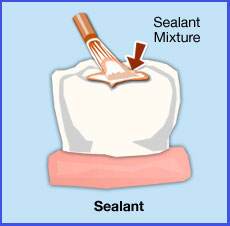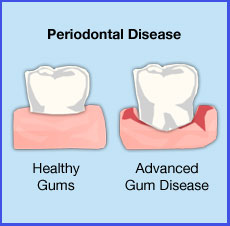Prevention is the best treatment option. By preventing disease and decay through consistent home care, professional dental cleanings and regular exams, you can maintain a healthy, beautiful smile.
In addition, effective prevention can help you avoid costly treatments in the future to remove decay, restore teeth and treat gum disease. Regular prevention is truly your best investment.
Cleanings & Exams
Professional Cleanings
Professional cleanings (dental prophylaxis) performed our hygienist form the foundation for preventing gum disease and tooth decay. In a professional cleaning our hygienist will:
- Remove plaque from the teeth – Plaque is a clear film that sticks to teeth and causes tooth decay and gum disease.
- Remove calculus (tarter) above and below the gum line. Calculus below the gum line may indicate gum disease and require a different procedure to remove it.
- Polish and remove stains from teeth
Dental Examinations:
Dental examinations help to diagnose disease before it becomes hazardous to your health. In addition, regular examinations can save you money by alleviating problems while they are small and before they become expensive to repair, or in some cases, impossible to repair. Your dental examinations generally include the following:
- Oral cancer screening
- Gum disease screening and pocket readings
- Visual examination for tooth decay
- Take diagnostic digital x-rays to check for decay between teeth, wisdom teeth, cysts, tumors, and other problems that can’t be seen by the naked eye
- Evaluation the condition of existing fillings, crowns and bridges and any other treatment previously done
We cannot emphasize enough how important it is to see your dentist regularly. Let’s prevent the disease!

Sealants
Protect the chewing surface of teeth from decay
The Problem:
- Deep pits and grooves on the chewing surface of back teeth that collect food and decay
The Solution:
Deep pits and grooves on the chewing surfaces of back teeth can trap food that can’t be removed by brushing or washed out by water or saliva. A sealant is a plastic material that bonds to tooth enamel “sealing” the pits and grooves and protect against decay. They are generally applied to children’s first permanent back teeth. They can also be useful for adults in certain situations.
Advantages:
Sealants are an excellent way to protect chewing surfaces of teeth from decay. They are quickly applied and economical particularly compared to fillings.
Disadvantages:
Sealants generally last about five to eight years with normal wear and may need to be re-applied. Also, sealants do not prevent decay between teeth or the onset of gum disease, so regular home care and dental visits are important.
Digital X-Rays (Radiographs)

How do Radiographs Help?
Dental x-rays allow the dentist and hygienist to see decay between teeth, wisdom teeth, oral cancer lesions in the jaw bone, cysts, root canal problems and more, all of which cannot be seen by the naked eye.
Using digital x-rays to diagnose these problems, we can save you money in the long run from surgeries or other treatments that might become necessary if we didn’t find the problem, not to mention going through the treatment itself. In some cases, dental x-rays show the location of tumorous growths, x-rays can be responsible for saving your life.
Advantages of Digital Radiography
Digital x-rays have many advantages:
- Greatly reduced radiation exposure
- Enhanced ability to refine image quality via software
- Instant viewing, 4 seconds from taking the x-ray to seeing it
- Environmentally friendly (no toxic chemicals)
Best of all, you to see what Dr. Palmer sees. Your digital x-ray can be seen on a computer screen located next to your dental chair. This helps you understand your needs and make an informed choice about any treatment.

Gum Disease
Gum disease (Periodontal Disease) is responsible for about 70 percent of adult tooth loss. It is characterized by swollen, inflamed gums surrounding the teeth. Plaque, a sticky substance that forms in the mouth from food, saliva and bacteria gets inside the space between the gum line and the tooth. If not removed, plaque hardens into a substance called calculus or tartar that is very difficult to remove. Eventually, the bacteria in the plaque and tartar eat away at the fibers that hold the gums to the teeth, creating deep pockets. As bacteria spread, the pockets become deeper until the bacteria finally eat away the bone that holds the tooth in place.
Think of it as if bugs are eating away at the soil around a tree trunk. Eventually, they eat away all of the soil and part of the tree’s roots, causing the tree to collapse.
Diagnosis
Gum disease is diagnosed through a process that measures the depth of the pockets around each tooth. Pockets that are greater than 3 millimeters in depth are considered hazardous and will generally require treatment.
The early detection and prevention of gum disease is another reason to see your dentist regularly.
Treatment
Gum disease is treated by carefully removing the bacteria and substances that form in the pockets around the teeth. The removal of this material occurs on a microscopic level and requires great skill. Our dental team has had advanced training regarding how to effectively remove all of the bacteria.
This process of removing the bacteria usually requires several visits to our office. Once the bacteria has been removed, the pockets must be cleaned and maintained on a regular basis by your dentist. Otherwise, the bacteria will return.
Long-Term Care
Keep in mind that once you have contracted periodontal disease, you will always have the disease due to the damage that it does to your body. Careful daily hygiene and regular dental visits to clean your pockets are required to keep the bacteria from returning. After the initial dental appointments to remove the bacteria, you will be placed on a regular appointment schedule called “periodontal maintenance” to keep your pockets free of bacteria.
Remember, it is always better to prevent disease than to treat disease.
